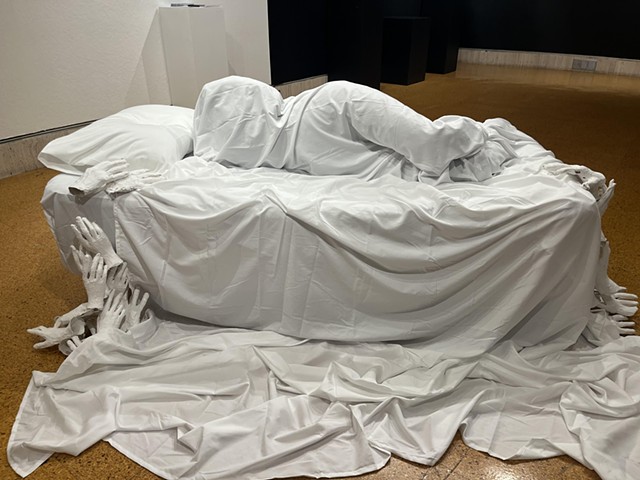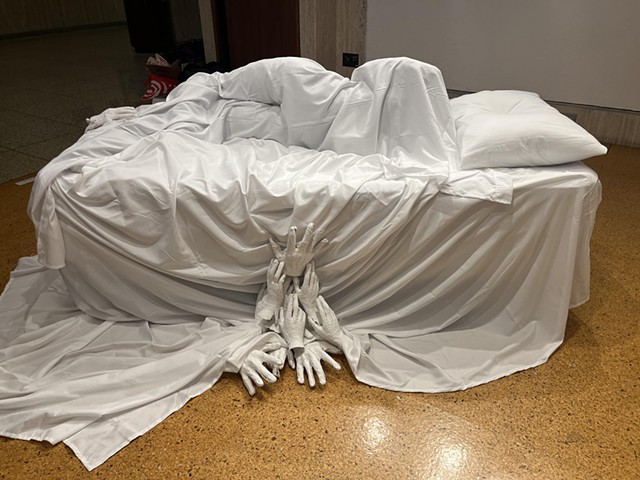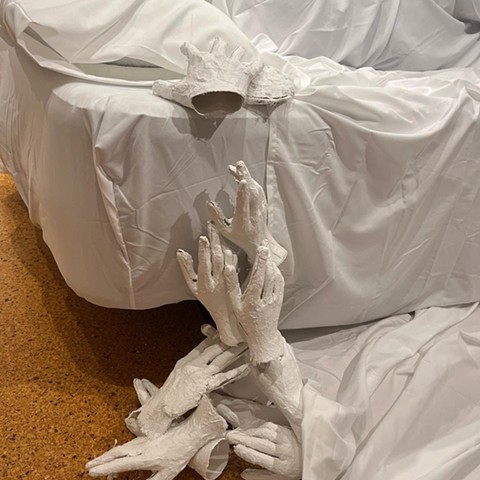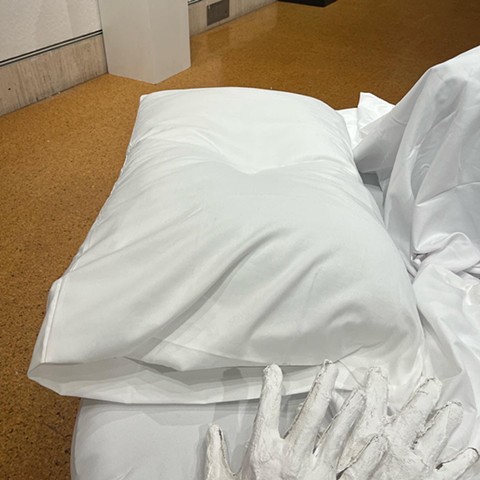Spencer Balter, Part II The Rotting
Part II: The Rotting
As a filmmaker and multimedia artist acutely interested in the emotional systems and dynamics that shape the human experience, I am largely focused on some of the greatest emotional pains a person can endure. Mostly, I am drawn to themes of traumatic experience and the processes those affected go through in their respective journeys toward understanding and healing. Although most of the world has had brushes with it in some form or another, traumatic pain is extremely misunderstood. In my work, I seek to tell these stories in a realistic and understandable way. Often this approach includes an element of fantasy, for I find that a balance between the harshness of reality and the limitlessness of the fantastical more accurately reflects the experiences of those who have lived through the unimaginable. Although my own traumatic experiences influence how I make the things I create, I do not work with trauma simply to tell my story; I work with trauma in the hope of cultivating connection, community, and representation for those suffering.
My thesis project consists of two parts. The first is a 14-minute narrative film, titled Reflex, about Charlie, a young woman who has experienced a sexual assault. In the film, Charlie struggles to give voice to the things that happened to her, creating a disconnect that manifests as the hallucination of six figures, each representing a symptom or theme associated with trauma. Charlie cannot sustain ignoring her pain, and quickly is caught between the everyday and the surreal world she created for herself.
The second part of my project is a sculptural installation that pulls from the central theme of the film: the complexity of life after a traumatic event. In this space, the viewer observes Charlie lying in her bed. Her body remains hidden, as she lies in her grief, anger, and shame. Here, Charlie is in a period of healing I refer to as “The Rotting.” She finds a simultaneous comfort and discomfort in reclining in her bed, surrounded by her pain and memories. The plaster hands emerging from beneath her sheets function in the same way that the creatures in Reflex do, to personify Charlie’s trauma and add an element of fantasy to her storyline. This space is not meant to trap the audience in Charlie’s experience but rather to allow them to be an observer to traumatic life and healing, as well as to invite them to walk through a place of simultaneous suffering and hope.
Part I: Reflex, can be watched here




